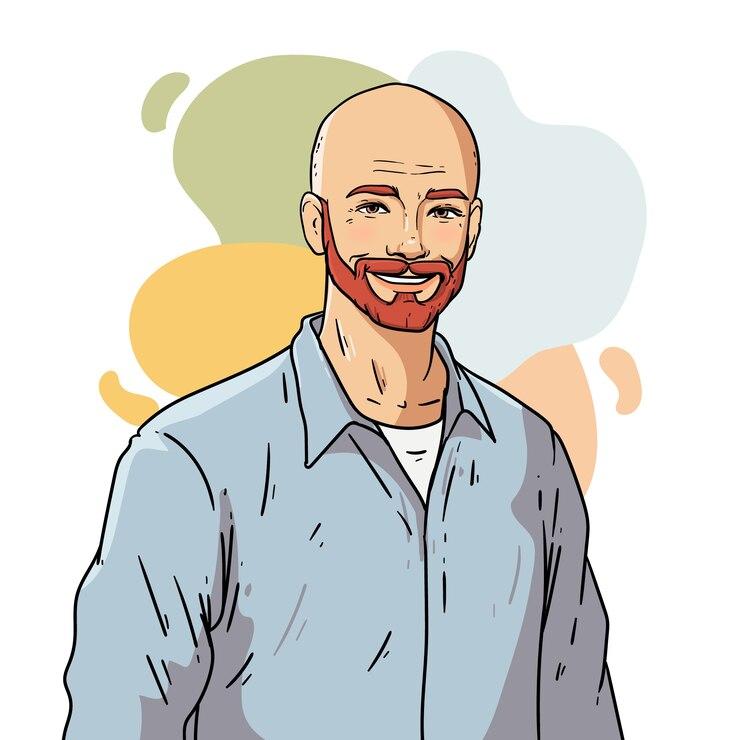Technological Advancements in Hair Grafting: How Australia is Leading the Way
In recent years, the field of hair restoration has seen remarkable advancements, with Australia emerging as a global leader in innovative hair grafting techniques. This article explores the cutting-edge technologies and methodologies that have put Australia at the forefront of hair transplantation, offering hope to millions suffering from hair loss worldwide.
The Evolution of Hair Grafting
Hair grafting, also known as hair transplantation, has come a long way since its inception. Dr. Norman Orentreich, widely regarded as the father of modern hair transplantation, conducted the first successful hair transplant in the 1950s. Since then, the field has undergone significant transformations, with Australian researchers and practitioners playing a pivotal role in its evolution.
Dr. Alam, a renowned Australian hair restoration surgeon, notes:
"The progress we've made in hair grafting techniques over the past few decades is nothing short of revolutionary. We've moved from large, unnatural-looking 'plugs' to incredibly fine, single-hair grafts that are virtually undetectable."
Follicular Unit Extraction (FUE): Australia's Contribution
One of the most significant advancements in hair grafting has been the development and refinement of Follicular Unit Extraction (FUE). This minimally invasive technique allows surgeons to extract individual hair follicles from the donor area and transplant them to the recipient site with unprecedented precision.
Australian clinics have been at the forefront of adopting and improving FUE techniques. Dr. Michael Redmond, a leading hair transplant specialist in Sydney, explains:
"FUE has revolutionized the field of hair restoration. In Australia, we've embraced this technology early on and have continually refined our approaches. Our focus on minimal scarring and natural-looking results has set new standards in the industry."
Australian researchers have also contributed to the development of advanced FUE tools, including more precise extraction devices and improved graft preservation solutions, further enhancing the success rates of hair transplantation procedures.
Robotic Hair Transplantation: The ARTAS System
Australia has been quick to adopt and implement robotic hair transplantation systems, particularly the ARTAS Robotic Hair Transplant System. This state-of-the-art technology uses artificial intelligence and robotic precision to assist surgeons in harvesting and implanting hair follicles.
Dr. Sarah Thompson, a hair restoration expert from Melbourne, shares her experience with the ARTAS system:
"The integration of robotics in hair transplantation has been a game-changer. The ARTAS system allows for unparalleled precision and consistency in graft harvesting, significantly reducing human error and improving overall outcomes."
Australian clinics have not only been early adopters of this technology but have also contributed to its ongoing development through feedback and clinical studies, helping to refine and improve the system for global use.
Stem Cell Research in Hair Regeneration
Australia's commitment to scientific research has placed it at the forefront of stem cell applications in hair regeneration. Several Australian universities and research institutions are conducting groundbreaking studies on using stem cells to stimulate hair growth and treat various forms of alopecia.
Professor David Sinclair, an Australian researcher at the University of New South Wales, comments on the potential of stem cell therapy in hair restoration:
"Our research into stem cell applications for hair regeneration is showing promising results. We're exploring ways to activate dormant hair follicles and even create new ones, which could revolutionize how we treat hair loss in the future."
These advancements in stem cell research are not only pushing the boundaries of what's possible in hair restoration but are also opening up new avenues for treating other forms of tissue regeneration.
3D Printing in Hair Transplantation
Australian researchers are also exploring the potential of 3D printing technology in hair transplantation. This innovative approach involves creating 3D-printed scaffolds that mimic the natural environment of hair follicles, potentially enhancing graft survival rates and overall transplant success.
Dr. Alex Chen, a biomedical engineer at the University of Melbourne, explains the potential of this technology:
"3D printing allows us to create precise, customized structures that can support hair follicle growth. This technology could significantly improve graft survival rates and enable us to treat even the most challenging cases of hair loss."
While still in the experimental stages, this research showcases Australia's commitment to pushing the boundaries of hair restoration technology.
Advanced Imaging and Diagnostics
Australian clinics have been quick to adopt and implement advanced imaging technologies for hair loss diagnosis and treatment planning. High-resolution scalp microscopy and AI-powered image analysis tools are now commonplace in leading Australian hair restoration centers.
Dr. Lisa Murray, a dermatologist specializing in hair disorders, highlights the importance of these technologies:
"Advanced imaging techniques allow us to assess hair loss patterns with unprecedented accuracy. We can now detect early signs of hair thinning and tailor our treatments more effectively, leading to better outcomes for our patients."
These diagnostic tools not only improve treatment planning but also enable more accurate monitoring of treatment progress over time.
Platelet-Rich Plasma (PRP) Therapy
While not unique to Australia, the country has been at the forefront of refining and optimizing Platelet-Rich Plasma (PRP) therapy for hair restoration. This treatment involves injecting a concentration of a patient's own platelets into the scalp to stimulate hair growth.
Dr. James Wilson, a hair restoration specialist in Brisbane, shares his experience with PRP therapy:
"We've seen remarkable results with PRP therapy, especially when combined with other hair restoration techniques. Our research has focused on optimizing platelet concentration and injection protocols to maximize its effectiveness."
Australian clinics have been instrumental in conducting clinical trials to establish standardized protocols for PRP therapy in hair restoration, contributing to its growing acceptance worldwide.
Training and Education
Australia's leadership in hair grafting technology is not limited to research and clinical practice. The country has also established itself as a global hub for hair restoration education and training.
Dr. Greg Williams, President of the International Society of Hair Restoration Surgery (ISHRS), comments on Australia's role in education:
"Australian hair restoration specialists have been instrumental in developing and disseminating best practices in hair grafting techniques. Their commitment to education and training has elevated the standard of care worldwide."
Many Australian clinics and universities offer specialized training programs and workshops for hair restoration surgeons from around the world, further cementing the country's position as a leader in the field.
Ethical Considerations and Patient-Centric Approach
As Australia leads the way in technological advancements, it's also setting standards for ethical practices and patient-centric care in hair restoration. Australian clinics are known for their comprehensive approach, which includes thorough patient counseling, realistic expectation setting, and long-term follow-up care.
Dr. Emma Roberts, a psychologist specializing in body image issues, emphasizes the importance of this holistic approach:
"Hair loss can have profound psychological impacts. Australian clinics are recognizing the importance of addressing not just the physical aspects of hair restoration but also the emotional and psychological needs of patients."
This comprehensive approach to patient care has set a new standard in the global hair restoration industry, emphasizing the importance of ethical practices and patient well-being.
Future Directions
As Australia continues to lead the way in hair grafting technology, several exciting developments are on the horizon. These include:
Further refinement of robotic hair transplantation systems for even greater precision and efficiency
Advancements in bioengineering for the creation of lab-grown hair follicles
Integration of virtual and augmented reality technologies for improved treatment planning and patient education
Development of personalized treatment protocols based on genetic profiling and AI-driven analysis
Dr. Rachel Lee, a futurist and healthcare technology expert, shares her vision for the future of hair restoration:
"The next decade will likely see a convergence of biotechnology, artificial intelligence, and personalized medicine in hair restoration. Australia is well-positioned to lead this revolution, potentially offering solutions that were once thought impossible."
Conclusion
Australia's leadership in hair grafting technology is a testament to the country's commitment to innovation, research, and excellence in healthcare. From pioneering new surgical techniques to pushing the boundaries of stem cell research, Australian researchers and practitioners are at the forefront of transforming the field of hair restoration.
As these advancements continue to evolve, they offer hope not just for those suffering from hair loss, but also for the broader field of regenerative medicine. Australia's contributions to hair grafting technology are setting new standards for patient care, treatment efficacy, and ethical practices, benefiting patients worldwide and solidifying the country's position as a global leader in this rapidly advancing field.
The future of hair restoration looks brighter than ever, thanks in large part to the groundbreaking work being done in Australia. As we look ahead, it's clear that the country will continue to play a pivotal role in shaping the future of hair grafting and regenerative medicine, offering new hope and possibilities for millions around the world.










Comments